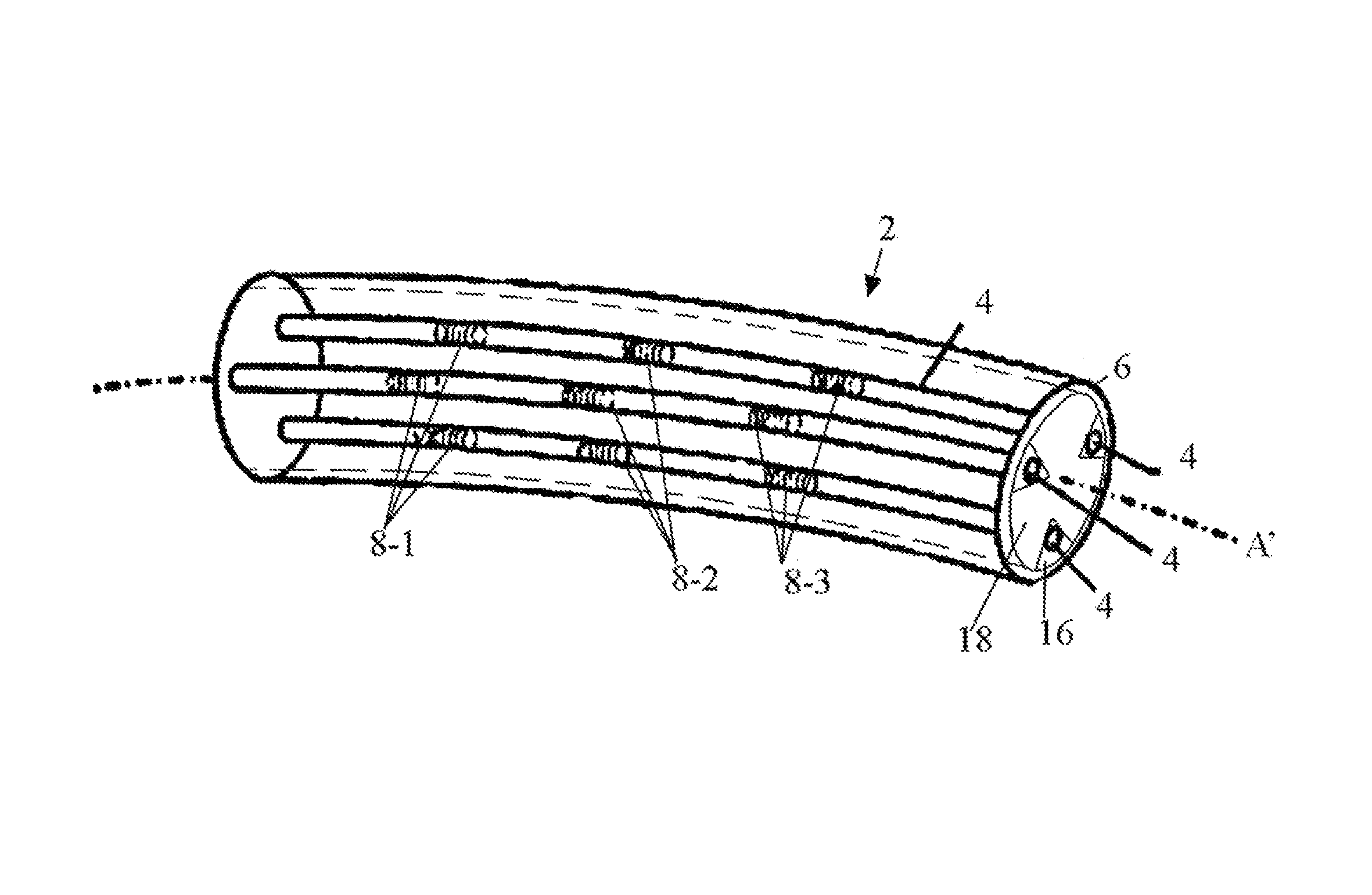In-situ three-dimensional shape rendering from strain values obtained through optical fiber sensors
a technology of optical fiber sensors and strain values, applied in the direction of instrumentation, testing of fibre optics/optical waveguide devices, structural/machine measurement, etc., can solve the problems of inability or impracticality of direct line-of-sight monitoring, inability to monitor aircraft wing shape in flight, and inability to use direct line-of-sight monitoring
- Summary
- Abstract
- Description
- Claims
- Application Information
AI Technical Summary
Benefits of technology
Problems solved by technology
Method used
Image
Examples
Embodiment Construction
[0032]The present invention is a method and system of rendering the shape of a multi-core optical fiber assembly in three-dimensional Space in real time based on measured fiber strain data. The optical fiber assembly includes three discrete and uniform fiber optic cores run parallel such that they are circularly arrayed at 120° intervals about a central, longitudinal axis. This can be accomplished using a traditional un-bonded multi-core optical fiber. For example, FIG. 1 shows a multi-core optical fiber 2 with three fiber cores 4 arranged in 120 degree separation out a common axis A′ and ceased within a common sheath 6. More preferably, FIG. 2 shows a multi-fiber assembly 12 in which with three discrete uniform optical fiber cores 4 are seated in a plurality of self-centering triangular slots 18 running axially along an elongate elastic body 16. The slots 18 themselves maintain a 120 degree separation about a common axis A′ and provide automatic alignment the optical fibers 4. One ...
PUM
 Login to View More
Login to View More Abstract
Description
Claims
Application Information
 Login to View More
Login to View More - R&D
- Intellectual Property
- Life Sciences
- Materials
- Tech Scout
- Unparalleled Data Quality
- Higher Quality Content
- 60% Fewer Hallucinations
Browse by: Latest US Patents, China's latest patents, Technical Efficacy Thesaurus, Application Domain, Technology Topic, Popular Technical Reports.
© 2025 PatSnap. All rights reserved.Legal|Privacy policy|Modern Slavery Act Transparency Statement|Sitemap|About US| Contact US: help@patsnap.com



